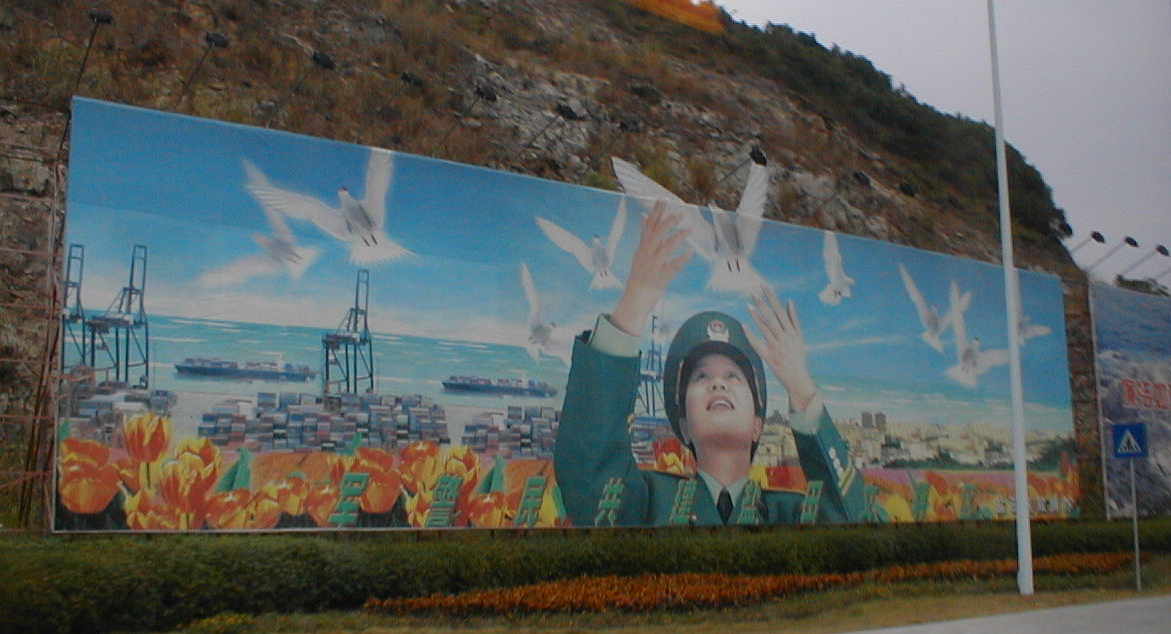Brand Management at a Distance?
Last modified 8 January
2002
|
Delegates to the APROS-2001 Conference held in
Hong Kong in December were given the opportunity to visit two factories
operated by Egana-Goldpfeil, one of the local
sponsors of the event.
Both Hong Kong and overseas firms have relocated manufacturing
activities to the SEZ. The region enjoys a tenfold advantage in labour cost
over Hong Kong. |
 |
Following the 1987 agreement over the return of Hong Kong to Chinese
sovereignty, the adjacent Shenzhen Special Economic Zone developed rapidly.
|
The twentieth anniversary of the Shenzhen SEZ was celebrated in
August 2000. The region achieved a per capita annual disposable income of
20,240 yuan (about 2,440 U.S. dollars) in 1999, more than 26.6 times the 1979
figure according to the Shenzhen Statistics Information Bureau.
The change is encapsulated in this Shanghai-built Buick sedan,
produced for the Chinese market, with gold-plate wheel arches and
airconditioning controlled from the rear seats. |
 |
Shenzhen became an SEZ on August 26, 1980, together with three other
coastal cities: Zhuhai, Shantou and Xiamen. Hainan Island became the largest
SEZ in April 1988. Background information on the SEZs can be found at the
China People's Daily
site.
 |
New apartments for sale at the border, new
retail and commercial property in Shenzhen City. |
 |
 |
While road and rail links from the SAR to the SEZ continue to
improve, the border still closes overnight. This is seen as a move to protect
relative land values. The proceeds from auction of government land remain a key
resource for the Hong Kong government. consequently auctions both sides of the
border are seen as a key economic indicator. |
Transferrable Skills? Transferrable IP?
Egana Goldpfeil manufactures jewellery and watches under a range of
brands. The jewellery factory is located at Nan
Ao on Depeng Bay in the South China Sea. It was relocated from Germany, with
the machinery arriving in forty shipping containers in 1996. The watch factory is located in Longgang to the north
east of Shenzhen City. It assembles watches from components manufactured by
subcontractors around Longgang.
The range of brands manufactured under licence can be seen at
http://www.irasia.com/listco/hk/eganajp/products/index.htm
for the jewellery factory and at
http://www.irasia.com/listco/hk/egana/products/index.htmfor
the watch factory.
The brand licences allow a high margin on labour intensive products.
Egana Goldpfeil also operates factories in India through their Indian arm,
Egana India (Pvt.) Limited.
While labour cost is a major driver, quality assurance and the
reproduction of key skills is also critical. However, what really adds value is
the set of agreements permitting the legal use of key brands for these
products.
For watches there are only three principal sources of electronic
watch movements. Sub-contractors provide everything but the approved logos
which are inscribed on-site, it is documentation which determines authenticity.
The jewellery is produced with the original German machinary
supplemented with additional local plant run on a two-shift (almost) twentyfour
hour cycle. While there is greater craft content, the attribution of high value
brands is also central to this operation.
Naomi Klein's book "No Logo" contains detailed analysis of condition
in free trade zones and a critical account of the cultural and financial
dimensions of brand management. Conditions, particularly in the clothing and
footwear sector, have been widely criticised.
Discussion of these issues continues at the
No Logo site.
An impression of conditions in the Egana factories can
be gained from the photo-galleries.
Back to Journeys
Back to Index
This page is maintained by
Stephen Little
Head, Centre for
Innovation, Knowledge and Enterprise
Open University Business
School
Milton Keynes, U.K.
s.e.little@open.ac.uk





